Amazon is making its Echo line of devices more family-friendly. The company had already launched an Echo aimed at parents and kids by bundling in FreeTime and giving the device a colorful look-and-feel. Today, it launched more devices ideal for kids’ rooms, while shipping them with features and accessories that make them not just toys, but practical household communication tools.
While the Echo Dot Kids Edition was designed to put an Alexa-powered speaker in the kids’ room, the newest Echo Show could be the next step for kids who want more than a Dot. The newly announced Echo Show 8 is the mid-sized missing piece to the Echo Show lineup, which now also includes the original 10″ device and the more recent, tinier and cheaper Echo Show 5.
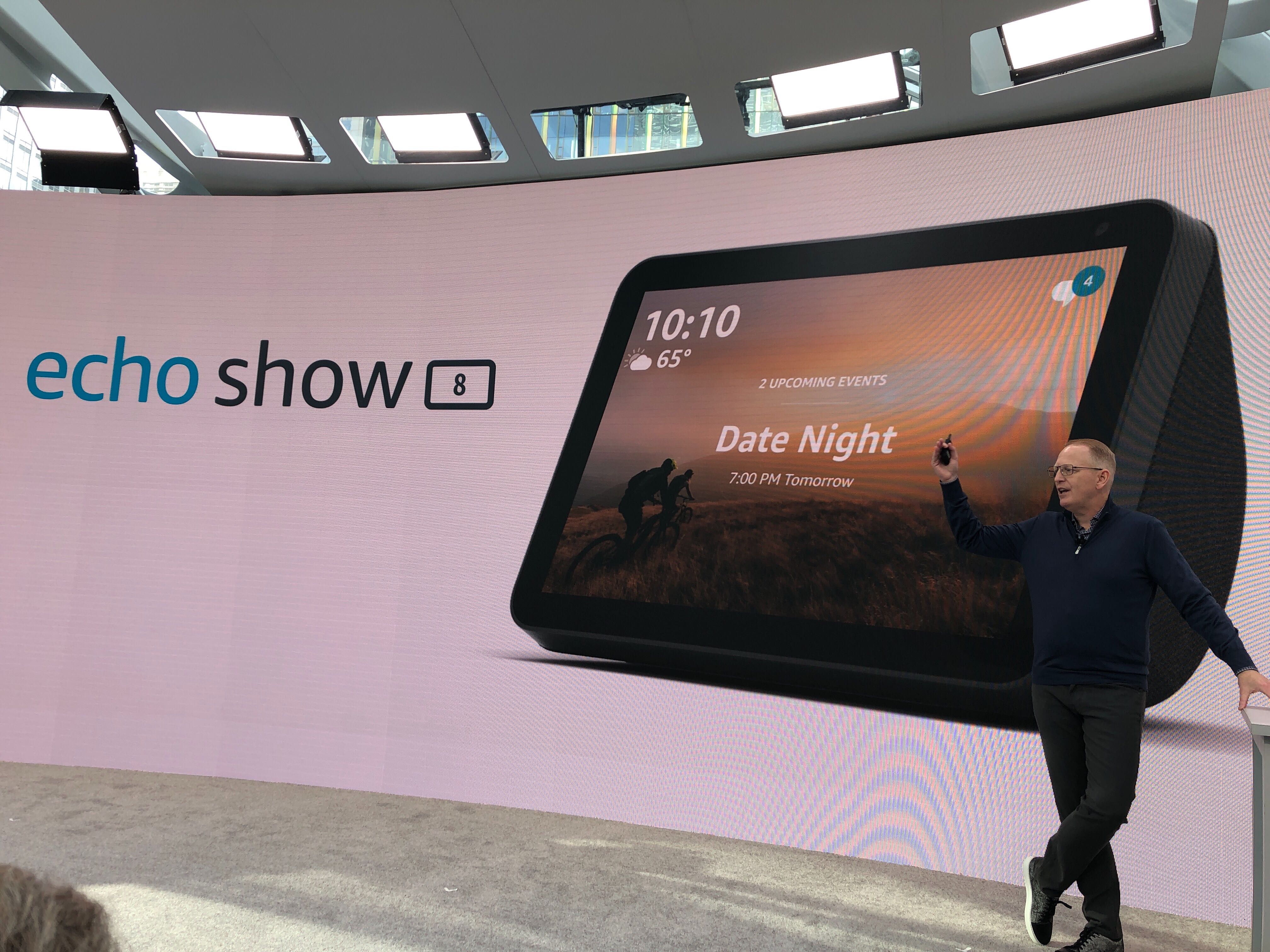
With the slightly bigger screen, but still affordably priced at $129, the Echo Show 8 makes sense for doing things like watching videos or chatting with friends and family on video calls, which are more appropriate for those beyond the preschool set.
On that last point, Amazon has addressed one of parents’ concerns with Alexa’s calling capabilities: it’s introducing a new service called “Alexa Communications for Kids.” This allows parents to whitelist specific family members or friends the child can talk to — and the other party has to opt-in too.

That means parents can approve the child to call or video chat with grandma and grandpa any time they choose — or vice versa — but not with strangers. For tweens and teens, it means a set of approved friends could also be allowed the same benefit. In other words, it offers similar functionality to Facebook Portal’s support of Messenger and WhatsApp….but it’s not, you know, from Facebook.
With a screen-based device, kids can also use the new Echo Show 8 to play games or watch videos.
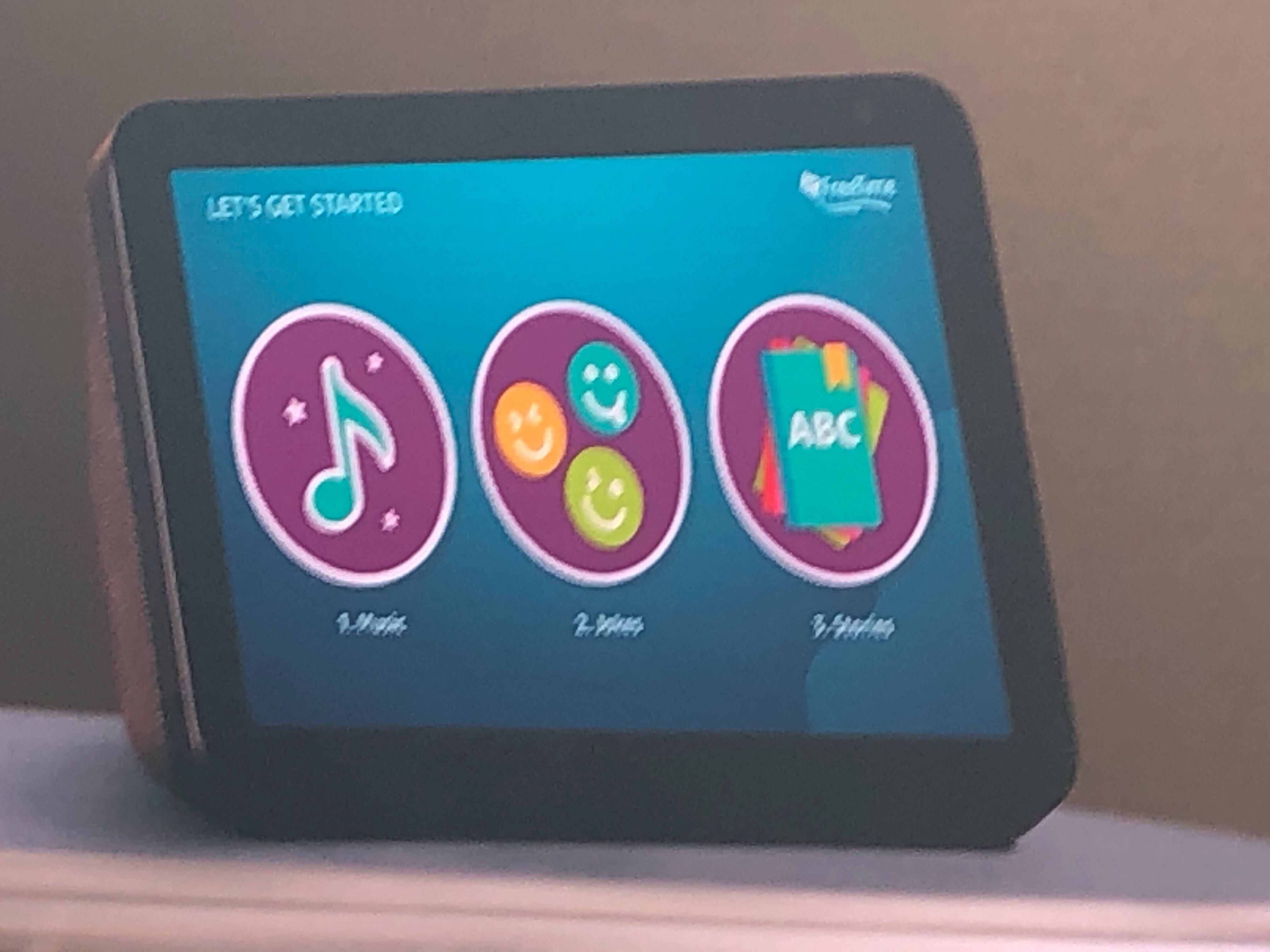
Alongside the launch of the Echo Show 8, Amazon is bringing its parental control system and kid-friendly subscription library FreeTime to all Echo Show devices. This will allow kids to watch only FreeTime-approved videos, decorate photos with stickers, sing along with the lyrics to their favorite music and more.
Meanwhile, the popular household feature drop-in is getting an upgrade, too. Parents often “drop-in” on kids to tell them to come to dinner or come downstairs, for example – the way intercom systems built into homes allowed for in the past.
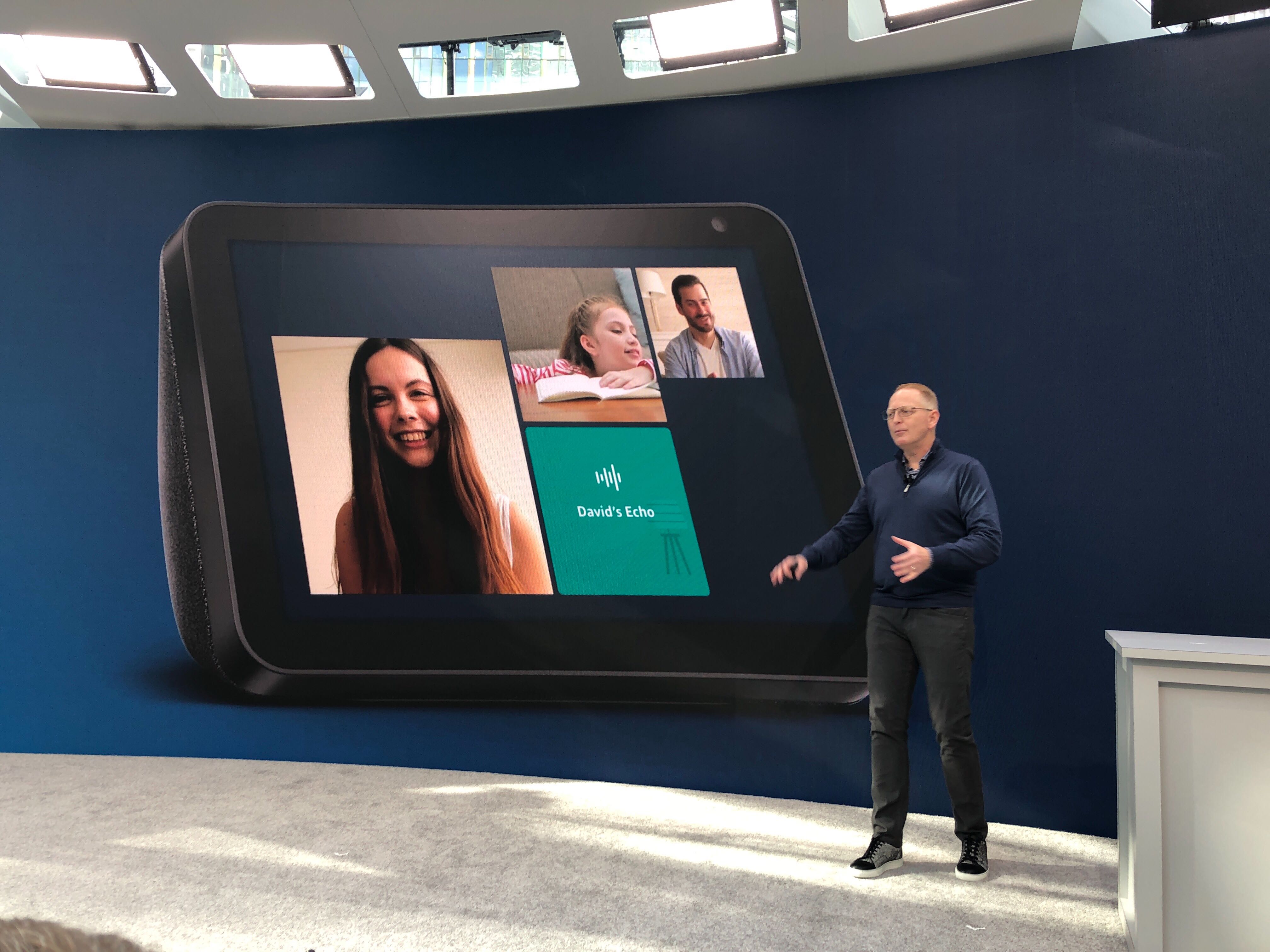
A new drop-in feature will let Echo owners drop-in on everyone in the family, and have them all appear in a mosaic on the screen, Brady Bunch-style, on Echo Shows with a screen.
Beyond the smart screen itself, Amazon is also angling its way into the education market with a new API that will connect its Alexa devices to ed-tech systems, including Learning Management Systems (LMS), Student Information Systems (SIS), Classroom Management providers, and massively open online course (MOOC) platforms.
When the supported skills ship later this year, parents of children 13 and up will be able to ask things like “Alexa, what did Kaylee do in school today?” while kids could ask “Alexa, what is my homework tonight?”
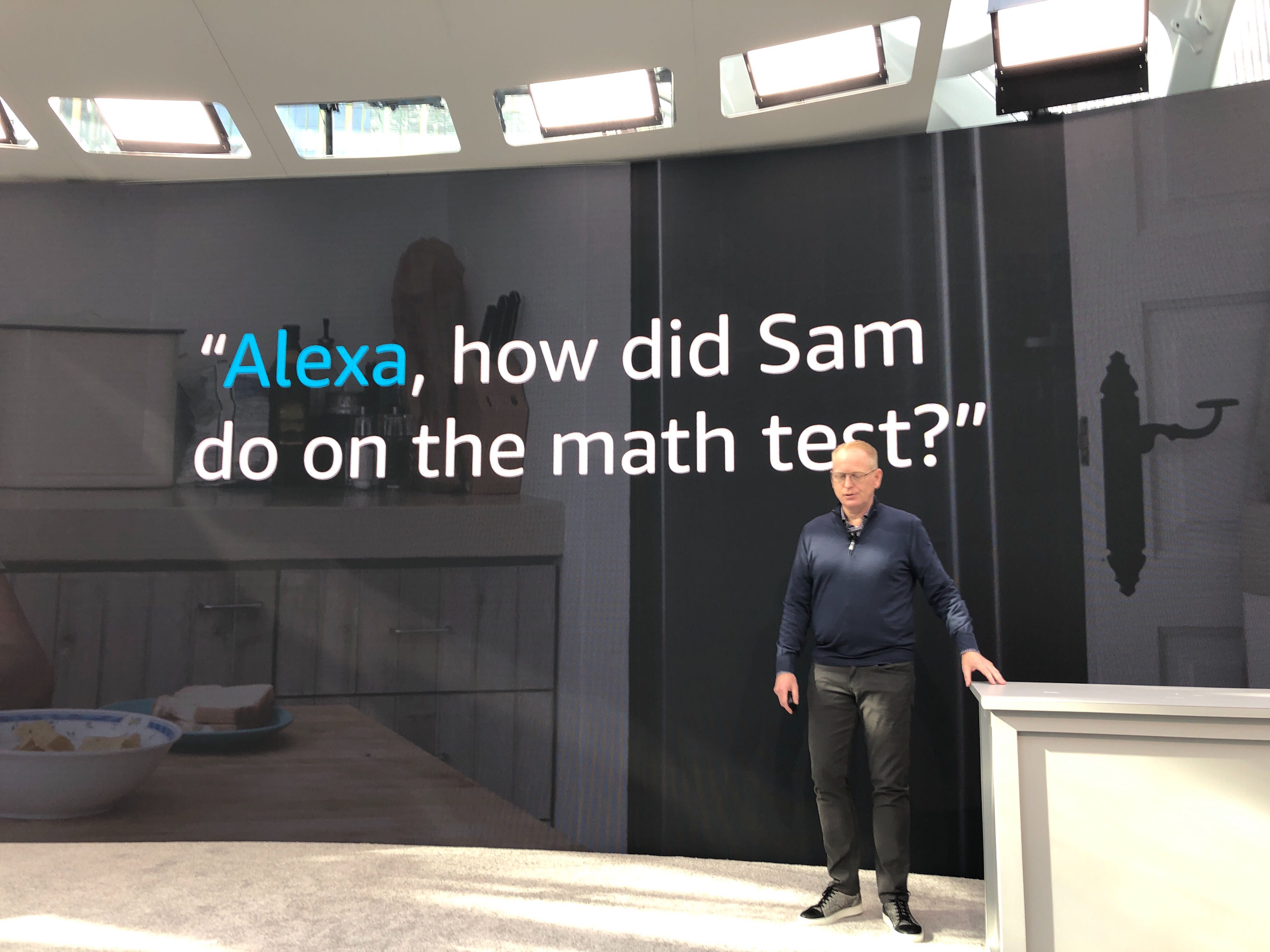
This feature will require participation from ed-tech software developers, but Amazon has lined up several partners on that front, including Kickboard, ParentSquare, Coursera, Canvas, and Blackboard.
Finally, there’s a new device that’s just for fun — the Echo Glow. It doesn’t have a purpose, exactly, beyond the fact that little kids will think it’s cool. Essentially a night light, the glowing orb can play in sync to the music, change colors when tapped, or run special modes — like one that blinks through all the colors, or another “campfire” mode with colors similar to those of a campfire.
This would be a great accessory for kids’ rooms but it’s going to be limited by the price: $30. Given it doesn’t have much functionality — it’s a toy — parents will probably stick to cheaper nightlights instead.
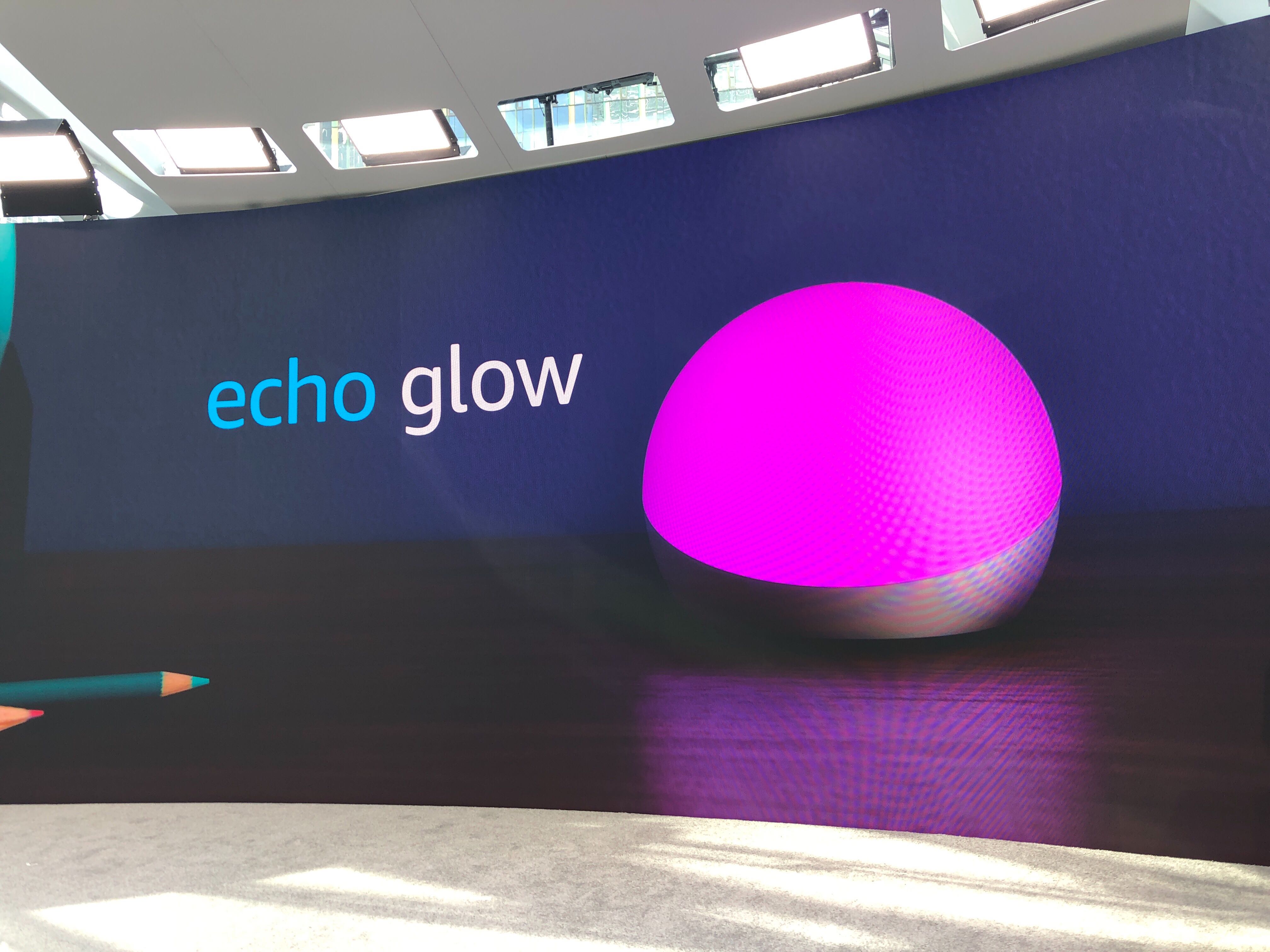
from TechCrunch https://ift.tt/2mLtTZZ
via IFTTT

Comments
Post a Comment